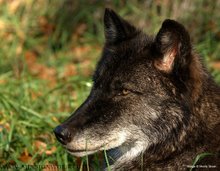From Wired:
Green Sea Slug Is Part Animal, Part Plant
SEATTLE — It’s easy being green for a sea slug that has stolen enough genes to become the first animal shown to make chlorophyll like a plant.
Shaped like a leaf itself, the slug Elysia chlorotica already has a reputation for kidnapping the photosynthesizing organelles and some genes from algae. Now it turns out that the slug has acquired enough stolen goods to make an entire plant chemical-making pathway work inside an animal body, says Sidney K. Pierce of the University of South Florida in Tampa.
The slugs can manufacture the most common form of chlorophyll, the green pigment in plants that captures energy from sunlight, Pierce reported January 7 at the annual meeting of the Society for Integrative and Comparative Biology. Pierce used a radioactive tracer to show that the slugs were making the pigment, called chlorophyll a, themselves and not simply relying on chlorophyll reserves stolen from the algae the slugs dine on.
“This could be a fusion of a plant and an animal — that’s just cool,” said invertebrate zoologist John Zardus of The Citadel in Charleston, S.C.
Well, cool and sort of creepy.
Thursday, January 14, 2010
Tuesday, January 12, 2010
The Long Way Home
I went hunting through the used bookstores the other day, and came out with Poul Anderson's 1958 novel The Long Way Home. It's about a group of explorer-astronauts who are trying out an experimental new spacedrive- by taking a trip several thousand light-years away.
Their experiments in the solar system seemed to indicate that the drive was instantaneous, so they're shocked and appalled when they get home and discover that 5000 years have passed. In retrospect, they realized that puzzling errors of measurement meant that the trip was only instantaneous for them.
You really have to take this with a grain of salt- it's the same kind of pulp-sf assumption that lets the Fantastic Four fly out into space solely on Reed Richard's smartness, rather than an organized mission plan with ground support from NASA. But if you can get past that, it's pretty good escapist fun.
The future, incidentally, is a stulified caste society with a computer overlord. Needless to say, Anderson's hero gets over his future shock and makes short work of everyone around him.
Their experiments in the solar system seemed to indicate that the drive was instantaneous, so they're shocked and appalled when they get home and discover that 5000 years have passed. In retrospect, they realized that puzzling errors of measurement meant that the trip was only instantaneous for them.
You really have to take this with a grain of salt- it's the same kind of pulp-sf assumption that lets the Fantastic Four fly out into space solely on Reed Richard's smartness, rather than an organized mission plan with ground support from NASA. But if you can get past that, it's pretty good escapist fun.
The future, incidentally, is a stulified caste society with a computer overlord. Needless to say, Anderson's hero gets over his future shock and makes short work of everyone around him.
Are Short Stories Scientific?
I was at the bookstore today, in the SF/Fantasy section as usual, looking at the anthologies that are lined up between "New Books" and the A's. They were all science fiction.
As I thought about that, it occurred to me that almost all the sf/f short story anthologies I'd seen were science fiction rather than fantasy. Fantasy, on the other hand, seems to have all the super-long Jordan/Goodkind epics.
Why is that? Is it just a quirk of publishing history- i.e. if Jordan had been an SF writer, we'd have a lot of encyclopedia-length science fiction imitators? Or is there something in the vaguely-defined difference between the two that selects for story length?
As I thought about that, it occurred to me that almost all the sf/f short story anthologies I'd seen were science fiction rather than fantasy. Fantasy, on the other hand, seems to have all the super-long Jordan/Goodkind epics.
Why is that? Is it just a quirk of publishing history- i.e. if Jordan had been an SF writer, we'd have a lot of encyclopedia-length science fiction imitators? Or is there something in the vaguely-defined difference between the two that selects for story length?
Subscribe to:
Posts (Atom)
